终版英语文学导论.ppt
- 格式:ppt
- 大小:2.21 MB
- 文档页数:68
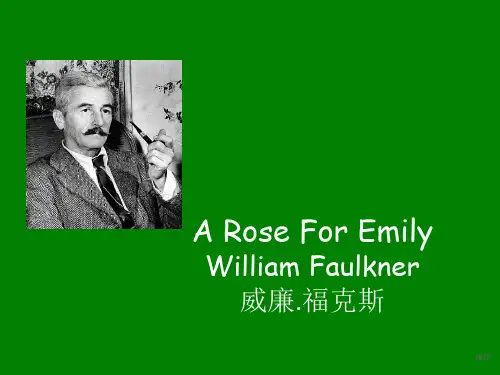
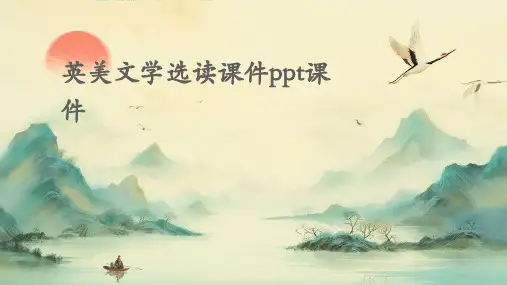
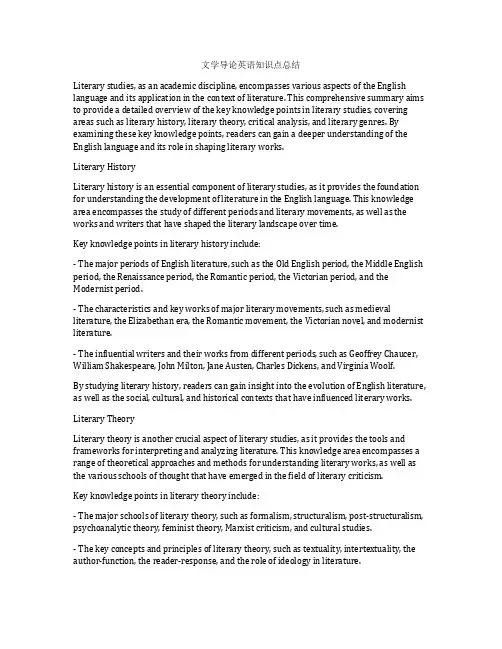
文学导论英语知识点总结Literary studies, as an academic discipline, encompasses various aspects of the English language and its application in the context of literature. This comprehensive summary aims to provide a detailed overview of the key knowledge points in literary studies, covering areas such as literary history, literary theory, critical analysis, and literary genres. By examining these key knowledge points, readers can gain a deeper understanding of the English language and its role in shaping literary works.Literary HistoryLiterary history is an essential component of literary studies, as it provides the foundation for understanding the development of literature in the English language. This knowledge area encompasses the study of different periods and literary movements, as well as the works and writers that have shaped the literary landscape over time.Key knowledge points in literary history include:- The major periods of English literature, such as the Old English period, the Middle English period, the Renaissance period, the Romantic period, the Victorian period, and the Modernist period.- The characteristics and key works of major literary movements, such as medieval literature, the Elizabethan era, the Romantic movement, the Victorian novel, and modernist literature.- The influential writers and their works from different periods, such as Geoffrey Chaucer, William Shakespeare, John Milton, Jane Austen, Charles Dickens, and Virginia Woolf.By studying literary history, readers can gain insight into the evolution of English literature, as well as the social, cultural, and historical contexts that have influenced literary works. Literary TheoryLiterary theory is another crucial aspect of literary studies, as it provides the tools and frameworks for interpreting and analyzing literature. This knowledge area encompasses a range of theoretical approaches and methods for understanding literary works, as well as the various schools of thought that have emerged in the field of literary criticism.Key knowledge points in literary theory include:- The major schools of literary theory, such as formalism, structuralism, post-structuralism, psychoanalytic theory, feminist theory, Marxist criticism, and cultural studies.- The key concepts and principles of literary theory, such as textuality, intertextuality, the author-function, the reader-response, and the role of ideology in literature.- The application of different theoretical approaches in analyzing literary works, such as the use of structuralist methods in understanding narrative structure, or the application of feminist theory in examining gender representation in literature.By understanding literary theory, readers can develop the critical tools and frameworks for interpreting and analyzing literature from various perspectives.Critical AnalysisCritical analysis is a fundamental skill in literary studies, as it involves the evaluation and interpretation of literary works through a critical lens. This knowledge area encompasses the methods and techniques for analyzing different elements of literature, as well as the approaches for writing critical essays and papers.Key knowledge points in critical analysis include:- The analysis of narrative elements, such as plot, character, setting, and point of view, and their significance in shaping the meaning and message of a literary work.- The examination of literary devices and techniques, such as imagery, symbolism, metaphor, and irony, and their role in conveying themes and ideas in literature.- The evaluation of thematic elements, such as the representation of love, death, power, or justice, and their cultural and philosophical implications in literary works.- The development of critical writing skills, such as formulating a thesis statement, providing textual evidence, and constructing a cohesive argument in a critical essay.By mastering critical analysis, readers can deepen their understanding of literary works and develop the skills for effectively interpreting and evaluating literature.Literary GenresLiterary genres are a key aspect of literary studies, as they encompass the different categories and types of literary works that exist within the English language. This knowledge area encompasses the study of various genres, such as poetry, drama, fiction, and non-fiction, as well as the conventions and characteristics that define each genre.Key knowledge points in literary genres include:- The characteristics of different genres, such as the use of verse and poetic language in poetry, the elements of dramatic structure and dialogue in drama, and the narrative techniques and storytelling conventions in fiction.- The examination of sub-genres within each category, such as epic poetry, lyric poetry, tragedy, comedy, the novel, the short story, and the essay, and their unique features and conventions.- The analysis of genre conventions and their historical and cultural significance, such as the development of the novel as a literary form, or the evolution of dramatic genres in different historical periods.By studying literary genres, readers can gain insight into the diverse forms and traditions of literary expression within the English language, as well as the conventions and techniques that have shaped the development of different genres.ConclusionIn conclusion, literary studies encompass a wide range of knowledge points related to the English language and its application in the context of literature. By examining the key knowledge areas of literary history, literary theory, critical analysis, and literary genres, readers can gain a deeper understanding of the English language and its role in shaping literary works. This comprehensive summary provides a foundation for further exploration and study in the field of literary studies, as well as the critical tools and frameworks for interpreting and analyzing literature from various perspectives.。
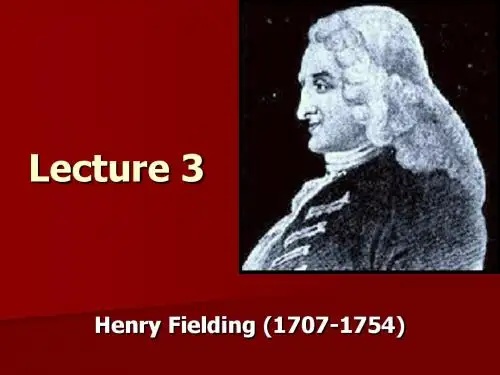
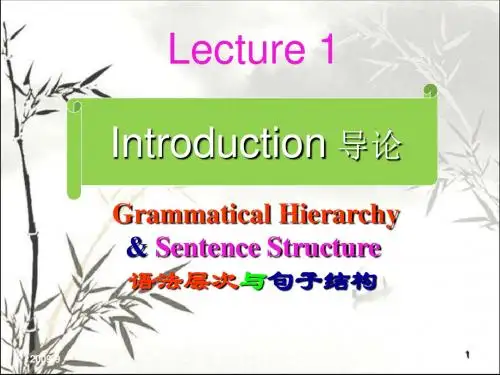
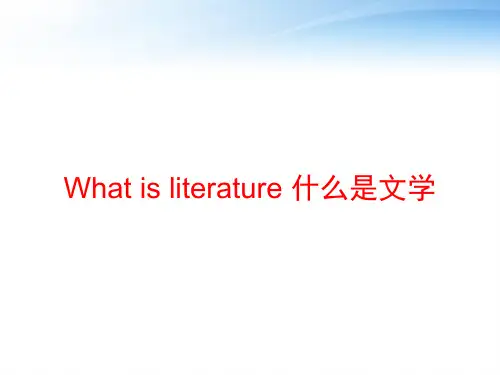
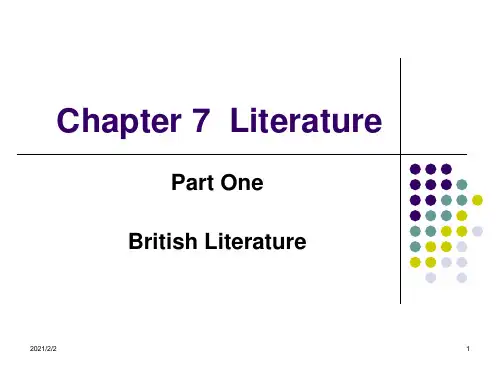
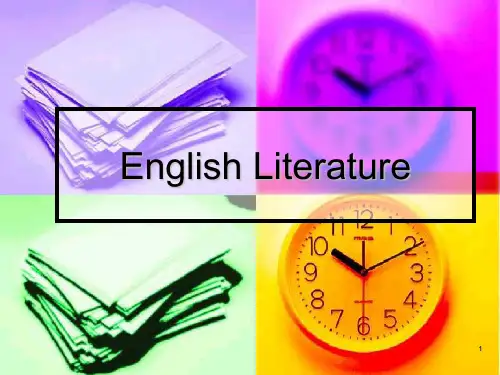
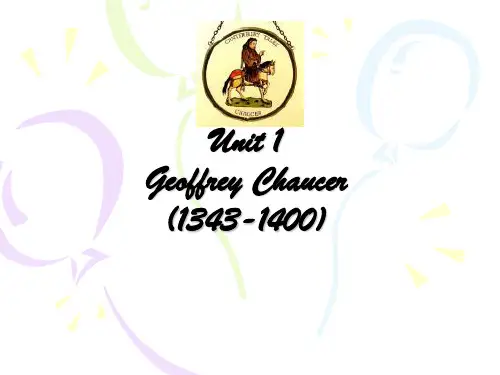
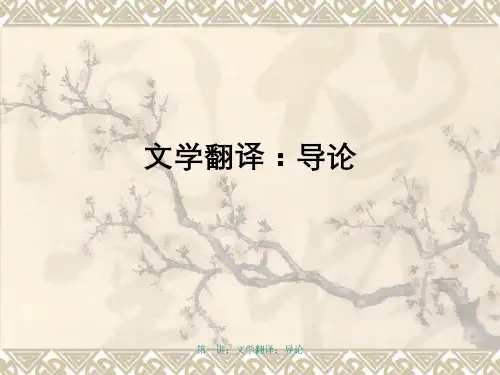
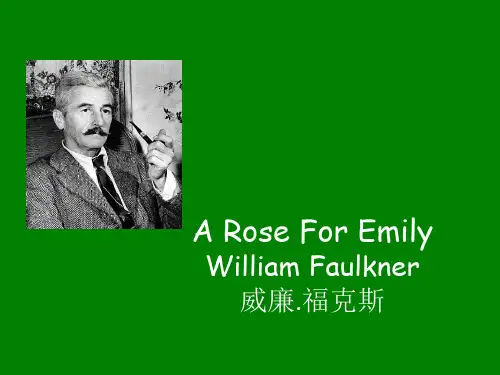
英语文学导论《英语文学导论》是一门以英语文学为研究对象的学科,它涵盖了从中世纪到现代的各种文学形式和流派。
本文将从英语文学的历史、文学形式、主题和影响等方面进行探讨。
一、英语文学的历史英语文学的历史可以追溯到中世纪,当时的英格兰文学主要是口头传统和宗教文学。
在14世纪,英国开始出现了一些杰出的诗人,如乔叟和兰德尔。
到了16世纪,随着文艺复兴的到来,英国的文学开始迎来了黄金时期。
莎士比亚、马洛、斯宾塞、培根等一批文学巨匠相继涌现。
17世纪则是英国文学的“启蒙时代”,约翰·洛克、弥尔顿等人成为了当时的代表性作家。
18世纪则是英国文学的“古典时代”,著名的作家包括亨利·菲尔丁、亚历山大·蒲柏等。
19世纪则是英国文学的“浪漫时代”,文学巨匠如拜伦、雪莱、济慈、狄更斯、奥斯汀等相继涌现。
20世纪以来,英国文学也有着较大的发展,包括现代主义、后现代主义等流派。
二、英语文学的文学形式英语文学的文学形式多种多样,主要包括诗歌、小说、戏剧、散文等。
在中世纪,英格兰的文学主要是口头传统和宗教文学,包括史诗、传奇、祷文等。
到了文艺复兴时期,诗歌开始成为英国文学的主要形式。
莎士比亚的戏剧不仅成为了英国文学的代表,也影响了全球文学。
19世纪以来,小说成为了英国文学的主要形式,例如狄更斯的《雾都孤儿》、勃朗特姐妹的《呼啸山庄》等。
同时,英国戏剧也有着较大的发展,包括奥斯卡·王尔德、贝克特等的作品。
英语文学的散文也是其中的一大亮点,如埃梅森、赫胥黎等人的作品。
三、英语文学的主题英语文学的主题多种多样,反映了不同的时代和文化背景。
中世纪的英国文学主要是宗教题材,如《坎特伯雷故事集》等。
文艺复兴时期的英国文学主要关注人文主义和爱情,如莎士比亚的《罗密欧与朱丽叶》等。
17世纪的英国文学主要关注政治和社会问题,如弥尔顿的《失乐园》等。
18世纪的英国文学则主要关注自然和人性,如亨利·菲尔丁的《汤姆·琼斯》等。
文学导论第1讲I. Introduction to the CourseII. Introduction to Literature (1)III. HomeworkI. Introduction to the Course1.1 Tasks for the MA programThe overall objective: to be trained to be researchersThe immediate objective: to be trained to write an MA paperThe Tasks of a Researcher: 1) to know the world: to find truth from facts (theoretical study); 2) to reform the world: for the interests of human beings, to solve problems (to analyze, to give predictions, or to design methods, practical study)The researching skills(details to be dealt with next term)1) Decide what to research: the topic (to find the problem to solve);2) How to research: to know the facts: 1) to collect data (search and reading); 2) to process the data: analyze, synthesize, judge, conclude, design (research and reading) (to find ways to solve the problem);3) Present the result in written form: writing the research paper.1.2 Literature and your studying area1) Literature Studies2) Literature and Translation3) Literature and Linguistics4) Literature and Culture1.3 The text book: the contentsChapters1,2,3,4, 71.4 Referential materials1) 《文学导论》,戴炜栋编,上海外语教育出版社,2002,Introducing Translation Studies,Jeremy Munday (可在湖南大学外国语学院董老师处邮购)2) Andrew Bennett, An Introduction to Literature, Criticism and Theory 3rd Edition, Longman, ISBN13: 9780582822955; ISBN10: 0-582-82295-53)Michael Meyer, The Bedford Introduction to Literature: Reading. Thinking. Writing, Bedford/St.Martins, 2008-00-00,1.5 The teaching plan1) Content: combination of theory and research;2) Time: 8:30 – 11:50, Monday, Tuesday;3) Steps: theory ---- research --- presentation --- discussion --- summary;4) Requirement for presentation: written in paper form (digital for the teacher);II. Introduction to Literature2.1 What is literature (Text Book: Chapter 1)2.2 The function (value) of Literature2.3 Literature and your studying area2.1 What is Literature?2.1.1 DefinitionLiterature can be described as a fiction consisting of carefully arranged words designed to stir the imagination.Stories, poems, and plays are fictional. They are made up –imagined –even when based upon actual historic events.Such imaginative writing differs from other kinds of writing because its purpose is not primarily to transmit facts or ideas. Imaginative literature is a source more of pleasure than of information.Imaginative literature offers pleasure and usually attempts to convey a perspective, mood, feeling, or experience.2.1.2 Values of literature1) It nourishes our emotional lives;2) It broadens our perspectives on the world, allowing us to move beyond the inevitable boundaries of our own lives and culture because it introduces us to people different from ourselves, places remote from our neighbor-hoods, and times other than our own;3) Practical values: writing paper or passing an exam;4) Improve your value of judgments, and emotions; your sensibilities and habits of mind that you bring to your work, friends, family, and the rest of your life;5) Cultivate the analytic skills.2.1.3 Compare: Factual and Literary1) Purpose of composition:Literature: for pleasure, to convey perspective, mood, feeling, or experience;Others: to provide information;2) Nature of composition:Literature: made up; out of imagination;Others: actual description; based on facts;3) Features of language:Literature: expressive, rhetorical; figures of speechOthers: succinct(简洁), exact;表层意义科学化诗化精确A B C D E F 模糊深层意义Examples:1) Factual Description: Snake by EncyclopaediaSnake is the common name for an elongated, limbless reptile of the order Squamata (有鳞爬行目;squama 鳞squamae: pl ), which also includes the lizards. Most snakes live on the ground, but some are burrowers(洞生), arboreal(树生), or aquatic; one group is exclusively marine. In temperate climates they hibernate[ ](冬眠). They are generally solitary in their habits, although they may congregate in places offering food or shelter, and large numbers may hibernate together. Snakes range in length from about 4 in. (10 cm) to over 30 ft (9 m). Most are protectively colored.2) The Snake by Emily Dickinson (1830-1886)1 A narrow fellow in the grass2 Occasionally rides;3 Y ou may have met him, - did you not,4 His notice sudden is.5 The grass divides as with a comb,6 A spotted shaft is seen;7 And then it closes at your feet8 And opens further on.9 He likes a boggy acre,10 A floor too cool for corn.11 Y et when a child, and barefoot,12 I more than once at morn,13 Have passed, I thought, a whip-lash14 Unbraiding in the sun,15 When, stooping to secure it,16 It wrinkled, and was gone.17 Several of nature's people18 I know, and they know me;19 I feel for them a transport20 Of cordiality([ˌkɔ:diˈæliti,ˈkɔ:diæliti]n. 诚实,郑重,诚恳);21 But never met this fellow,22 Attended or alone,23 Without a tighter breathing,24 And zero at the bone.Directions: Compare this poem with Material No.1). Find out the difference between literary writing and science writing(purpose and expression). Identify the literary points in the poem.3.2 Story (Novel)3.2.1 DefinitionNovel.: a novel is an extended prose fiction narrative of 50,000 words or more, broadly realistic - concerning the everyday events of ordinary people - and concerned with character. "People in significant action" is one way of describing it.Another definition might be "an extended, fictional prose narrative about realistic characters and events." It is a representation of life, experience, and learning. Action, discovery, and description are important elements, but the most important tends to be one or morecharacters--how they grow, learn, find--or don't grow, learn, or find.Novella. A prose fiction longer than a short story but shorter than a novel. The short story ends at about 20,000 words, while the novel begins at about 50,000. Thus, the novella is a fictional work of about 20,000 to 50,000 words. Examples:∙Henry James, Daisy Miller∙Robert Louis Stevenson, Dr. Jekyll and Mr. Hyde∙Henry James, Turn of the Screw3.2.2 Types of novel/storyAdventure novel. A novel where exciting events are more important than character development and sometimes theme. Examples:∙H. Rider Haggard, King Solomon's Mines∙Baroness Orczy, The Scarlet Pimpernel∙Alexandre Dumas, The Three Musketeers∙Alexandre Dumas, The Count of Monte CristoApologue(寓言故事). A moral fable, usually featuring personified animals or inanimate objects which act like people to allow the author to comment on the human condition. Often, the apologue highlights the irrationality of mankind. The beast fable, and the fables of Aesop are examples. Some critics have called Samuel Johnson's Rasselas an apologue rather than a novel because it is more concerned with moral philosophy than with character or plot. Examples:∙George Orwell, Animal Farm∙Rudyard Kipling, The Jungle BookAutobiographical novel. A novel based on the author's life experience. Many novelists include in their books people and events from their own lives because remembrance is easier than creation from scratch. Examples:∙James Joyce, Portrait of the Artist as a Young Man∙Thomas Wolfe, Look Homeward, AngelChildren's novel. A novel written for children and discerned by one or more of these: (1) a child character or a character a child can identify with, (2) a theme or themes (often didactic) aimed at children, (3) vocabulary and sentence structure available to a young reader. Many "adult" novels, such as Gulliver's Travels, are read by children. The test is that the book be interesting to and--at some level--accessible by children. Examples:∙Mark Twain, Tom Sawyer∙L. M. Montgomery, Anne of Green GablesChristian novel.A novel either explicitly or implicitly informed by Christian faith and often containing a plot revolving around the Christian life, evangelism, or conversion stories. Sometimes the plots are directly religious, and sometimes they are allegorical or symbolic. Traditionally, most Christian novels have been viewed as having less literary quality than the "great" novels of Western literature. Examples:∙Charles Sheldon, In His Steps∙Lloyd C. Douglas, The Robe∙Henryk Sienkiewicz, Quo Vadis∙Par Lagerkvist, Barabbas∙Catherine Marshall, Christy∙ C. S. Lewis, Perelandra∙G. K. Chesterton, The Man Who was Thursday∙Bodie Thoene, In My Father's HouseComing-of-age story(成长小说)A type of novel where the protagonist is initiated into adulthood through knowledge, experience, or both, often by a process of disillusionment. Understanding comes after the dropping of preconceptions, a destruction of a false sense of security, or in some way the loss of innocence. Some of the shifts that take place are these:∙ignorance to knowledge∙innocence to experience∙false view of world to correct view∙idealism to realism∙immature responses to mature responsesExample:∙Jane Austen Northanger AbbeyDetective novel. A novel focusing on the solving of a crime, often by a brilliant detective, and usually employing the elements of mystery and suspense. Examples:∙Sir Arthur Conan Doyle, The Hound of the Baskervilles∙Agatha Christie, Murder on the Orient Express∙Dorothy Sayers, Strong PoisonDystopian novel(反面乌托邦). An anti-utopian novel where, instead of a paradise, everything has gone wrong in the attempt to create a perfect society. See utopian novel. Examples:∙George Orwell, Nineteen Eighty-Four∙Aldous Huxley, Brave New WorldEpistolary novel(书信体).A novel consisting of letters written by a character or several characters. The form allows for the use of multiple points of view toward the story and the ability to dispense with an omniscient narrator. Examples:∙Samuel Richardson, Pamela∙Samuel Richardson, Clarissa∙Fanny Burney, Evelina∙ C. S. Lewis, The Screwtape Letters∙Hannah W. Foster, The CoquetteExistentialist novel(存在主义小说). A novel written from an existentialist viewpoint, often pointing out the absurdity and meaninglessness of existence. Example:∙Albert Camus, The StrangerFantasy novel(幻想小说). Any novel that is disengaged from reality. Often such novels are set in nonexistent worlds, such as under the earth, in a fairyland, on the moon, etc. The characters are often something other than human or include nonhuman characters. Example:∙J. R. R. Tolkien, The HobbitGothic novel. A novel in which supernatural horrors and an atmosphere of unknown terror pervades the action. The setting is often a dark, mysterious castle, where ghosts and sinister humans roam menacingly. Horace Walpole invented the genre with his Castle of Otranto. Gothic elements include these:∙Ancient prophecy, especially mysterious, obscure, or hard to understand.∙Mystery and suspense∙High emotion, sentimentalism, but also pronounced anger, surprise, and especially terror ∙Supernatural events (e.g. a giant, a sighing portrait, ghosts or their apparent presence, a skeleton)∙Omens, portents, dream visions∙Fainting, frightened, screaming women∙Women threatened by powerful, impetuous male∙Setting in a castle, especially with secret passages∙The metonymy of gloom and horror (wind, rain, doors grating on rusty hinges, howls in the distance, distant sighs, footsteps approaching, lights in abandoned rooms, gusts of wind blowing out lights or blowing suddenly, characters trapped in rooms or imprisoned) ∙The vocabulary of the gothic (use of words indicating fear, mystery, etc.: apparition, devil,ghost, haunted, terror, fright)Examples:∙Horace Walpole, The Castle of Otranto∙William Beckford, Vathek∙Anne Radc liffe, The Mysteries of Udolpho∙Mary Shelley, Frankenstein∙Daphne du Maurier, RebeccaHistorical novel. A novel where fictional characters take part in actual historical events and interact with real people from the past. Examples:∙Sir Walter Scott, Ivanhoe∙Sir Walter Scott, Waverly∙James Fenimore Cooper, Last of the Mohicans∙Lloyd C. Douglas, The RobeHypertext novel. A novel that can be read in a nonsequential way. That is, whereas most novels flow from beginning to end in a continuous, linear fashion, a hypertext novel can branch--the reader can move from one place in the text to another nonsequential place whenever he wishes to trace an idea or follow a character. Also called hyperfiction. Most are published on CD-ROM. See also interactive novel. Examples:∙Michael Joyce, Afternoon∙Stuart Moulthrop, Victory GardenInteractive novel. A novel with more than one possible series of events or outcomes. The reader is given the opportunity at various places to choose what will happen next. It is therefore possible for several readers to experience different novels by reading the same book or for one reader to experience different novels by reading the same one twice and making different choices.Multicultural novel. A novel written by a member of or about a cultural minority group, giving insight into non-Western or non-dominant cultural experiences and values, either in the United States or abroad. Examples:∙Chinua Achebe, Things Fall Apart∙Amy Tan, The Kitchen God's Wife∙Forrest Carter, The Education of Little Tree∙Margaret Craven, I Heard the Owl Call My Name∙James Baldwin, Go Tell It on the Mountain∙Chaim Potok, The Chosen∙Isaac Bashevis Singer, The Penitent∙Alice Walker, The Color PurpleMystery novel.A novel whose driving characteristic is the element of suspense or mystery. Strange, unexplained events, vague threats or terrors, unknown forces or antagonists, all may appear in a mystery novel. Gothic novels and detective novels are often also mystery novels.∙Novel of manners. A novel focusing on and describing in detail the social customs and habits of a particular social group. Usually these conventions function as shaping or even stifling controls over the behavior of the characters. Examples:∙Jane Austen, Pride and Prejudice∙William Makepeace Thackeray, Vanity FairParody(仿拟小说). A satiric imitation of a work or of an author with the idea of ridiculing the author, his ideas, or work. The parodist exploits the peculiarities of an author's expression--his propensity(倾向) to use too many parentheses, certain favorite words, or whatever. The parody may also be focused on, say, an improbable plot with too many convenient events. Fielding's Shamela is, in large part, a parody of Richardson's Pamela.Picaresque novel. An episodic often autobiographical novel about a rogue or picaro (a person of low social status) wandering around and living off his wits. The wandering hero provides the author with the opportunity to connect widely different pieces of plot, since the hero can wander into any situation. Picaresque novels tend to be satiric and filled with petty detail. Examples:∙Daniel Defoe, Moll Flanders∙Miguel de Cervantes, Don Quixote∙Henry Fielding, Jonathan WildPulp fiction(通俗小说). Novels written for the mass market, intended to be "a good read,"--often exciting, titillating, thrilling. Historically they have been very popular but critically sneered at as being of sub-literary quality. The earliest ones were the dime novels of the nineteenth century, printed on newsprint (hence "pulp" fiction) and sold for ten cents. Westerns, stories of adventure, even the Horatio Alger novels, all were forms of pulp fiction.Regional novel. A novel faithful to a particular geographic region and its people, including behavior, customs, speech, and history. Examples:∙Harper Lee, To Kill a Mockingbird∙Thomas Hardy, Return of the NativeRoman a clef.(纪实小说)[French for "novel with a key," pronounced roh MAHN ah CLAY] A novel in which historical events and actual people are written about under the pretense of being fiction. Examples:∙Aphra Behn, Love Letters Between a Nobleman and His Sister∙Ernest Hemingway, The Sun Also RisesRomance. An extended fictional prose narrative about improbable events involving characters that are quite different from ordinary people. Knights on a quest for a magic sword and aided by characters like fairies and trolls(巨人、侏儒、怪兽)would be examples of things found in romance fiction. Examples:∙Miguel de Cervantes, Don Quixote∙Sir Philip Sidney, The ArcadiaIn popular use, the modern romance novel is a formulaic love story (boy meets girl, obstacles interfere, they overcome obstacles, they live happily ever after). Computer software is available for constructing these stock plots and providing stereotyped characters. Consequently, the books usually lack literary merit. Examples:∙Harlequin Romance seriesScience fiction novel. A novel in which futuristic technology or otherwise altered scientific principles contribute in a significant way to the adventures. Often the novel assumes a set of rules or principles or facts and then traces their logical consequences in some form. For example, given that a man discovers how to make himself invisible, what might happen? Examples:∙H. G. Wells, The Invisible Man∙Aldous Huxley, Brave New World∙Arthur C. Clarke, 2001: A Space Odyssey∙Ray Bradbury, The Martian ChroniclesSentimental novel.A type of novel, popular in the eighteenth century, that overemphasizes emotion and seeks to create emotional responses in the reader. The type also usually features an overly optimistic view of the goodness of human nature. Examples:∙Oliver Goldsmith, The Vicar of Wakefield∙Henry Mackenzie, The Man of Feeling∙Laurence Sterne, A Sentimental Journey∙Thomas Day, The History of Sandford and MertonSequel(系列小说). A novel incorporating the same characters and often the same setting as a previous novel. Sometimes the events and situations involve a continuation of the previous novel and sometimes only the characters are the same and the events are entirely unrelated to the previous novel. When sequels result from the popularity of an original, they are often hastily written and not of the same quality as the original. Occasionally a sequel is written by an author different from that of the original novel. See series. Examples:∙Mark Twain, Adventures of Tom Sawyer∙Mark Twain, Tom Sawyer Abroad∙Mark Twain, Tom Sawyer Detective∙Margaret Mitchell, Gone With the Wind∙Alexandra Ripley, ScarlettSeries(续集小说). Several novels related to each other, by plot, setting, character, or all three. Book marketers like to refer to multi-volume novels as sagas(传奇). Examples:∙Anthony Trollope, Barsetshire novels∙ C. S. Lewis, Chronicles of Narnia novels∙L. M. Montgomery, Anne of A vonlea novels∙James Fenimore Cooper, The Leatherstocking TalesUtopian novel. A novel that presents an ideal society where the problems of poverty, greed, crime, and so forth have been eliminated. Examples:∙Thomas More, Utopia∙Samuel Butler, Erewhon∙Edward Bellamy, Looking BackwardThe most common verse in English poetry is iambic pentameter. See foot for more information.Western(美国西部小说) A novel set in the western United States featuring the experiences of cowboys and frontiersmen. Many are little more than adventure novels or even pulp(低级黄色书刊)fiction, but some have literary value. Examples:∙Walter V an Tilburg Clark, The Ox-Bow IncidentOwen Wister, The VirginianIII. Homework1. Literature Studies2. Literature and Linguistic Studies3. Literature and Translation Studies4. Literature and Culture StudiesOutline:I. Introduction to the topic and the thematic statement (main points of your idea);II. Discussion of the topic: the points, argumentation: evidence and reasons;III. Conclusion: summary of the main points, judgment;(500 words)。